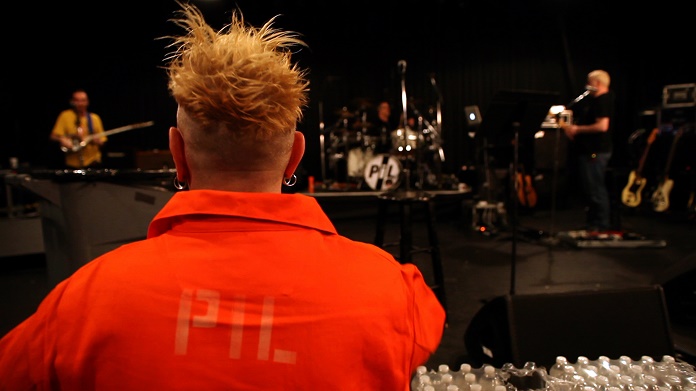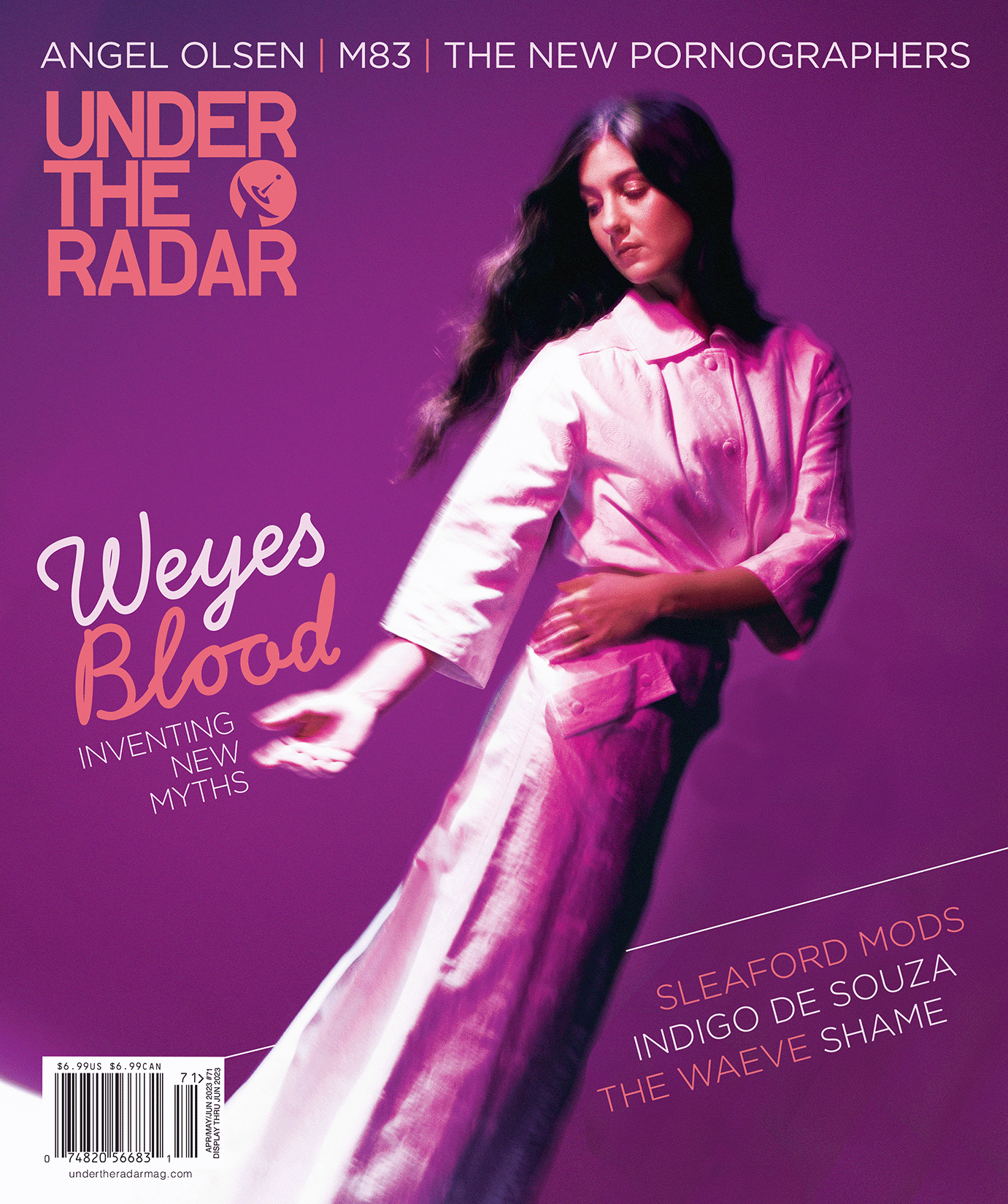
Tribeca 2017: Director Tabbert Fiiller on new John Lydon documentary, “The Public Image is Rotten”
Film chronicles career of PiL frontman and one-time Sex Pistol
May 01, 2017
Web Exclusive
![]()
Provocateur. Iconoclast. Innovator. Butter spokesman. From his beginnings as the Sex Pistols’ snarling Johnny Rotten through decades at the helm of his own ever-morphing band, Public Image Ltd (or PiL, for short), John Lydon has for more than 40 years served as one of rock and roll’s most influential and outspoken stars. He’s the subject of The Public Image is Rotten, a new documentary which premiered at the Tribeca Film Festival, and offers what is probably the closest thing we’ll ever see to an all-access-pass to the punk icon’s personal life and creative process.
Mexican-born filmmaker Tabbert Fiiller spent days chatting on camera with Lydon in his home. Their freewheeling (and surprisingly forthright) conversations form the musculature of his documentary, which is illustrated with archival footage and complemented through interviews with Lydon’s former PiL bandmates and musicians who were influenced by his work.
Fiiller spoke with us at the festival about what it took to get his famously hard-to-interview subject to open up on camera, his personal relationship with Lydon’s music, and more.
Austin Trunick [Under the Radar]: I know that before you ever thought of doing a documentary about John Lydon, you were a fan. Can you tell me what John’s music meant to you?
Tabbert Fiiller: I grew up in Mexico. There were things that I guess happened all over the world, but in Mexico seemed like they lasted a little bit longer than in other places. TV shows wouldn’t play live music, and [bands] would always have to pretend. It was very stale and contrived, as far as the music aspects of mainstream music in Mexico. In 1968, there was a big Woodstock-like festival. It was chaotic and not very well-planned, and people were stuck because they drove in. They were trapped, and couldn’t leave for days. But it was transformative, like Woodstock, but the government was very conservative and afterwards banned rock music. So, international bands couldn’t come. The biggest records were released in Mexico.
And so, this is how I grew up. In the 1980s there was only manufactured pop music on TV and the radio, and so when I came across music that seemed real like that, I was very interested. You know, in adolescence, you have a natural rebellion. Like people all over the world, I identified with John and the Sex Pistols.
You played in a band, and were into skating. Was there a punk scene in Mexico?
That was kind of a two-edged sword. On one hand, you couldn’t see any of the international bands you wanted to see because they weren’t allowed to play in Mexico. But on the other hand, there was a very tight-knit rock underground. All types of rock music were underground – not only punk. Every Saturday there’s this kind of open-air market in Mexico City, kind of like a farmer’ market but it’s all records and t-shirts and stuff like that. People walk around with their boxes of records and they’ll trade. That’s kind of the hub of rock music.
I got into skating first, and through skating I got into music. There is a punk scene everywhere, including Mexico, which is an exciting thing.
Was there a warming up process before John would open up to you like he did?
Well, yeah. When I first met Hunter [Gray] and Phaedon [Papadopoulos], two of our producers, they asked me if I wanted to do it. I hadn’t directed anything before. I wanted to do it, but I was really nervous about it. But I said yes right away, and I wrote a proposal. I guess they were talking to other people, but I was really trying to get it. They really liked my proposal, and then when it was time to meet John I was pretty prepared, I guess.
To warm up, I just wanted to meet with John and interview him just with an [audio] recorder, just as research. Some of it ended up in the film. We did that three times, and in the process we built a kind of vibe.
He’s famous for being a tough interview. Did that present challenges to you, as a documentarian?
I think longer is easier. Coming in with a specific agenda, that can be hit or miss. If you’re in sync with him and he wants to talk about what you want to ask him, it’s great.
The thing is, people think that it’s an act; like he’s being rebellious, or something like that. But I think that he can’t help himself. If you ask him to do something, he can’t bring himself to do it. [Laughs] He has to do the opposite thing, always. I knew that I just had to go with the flow. When we started doing the interviews that we shot on camera, I would ask questions and he would go off on tangents. I had all of my questions organized chronologically, and I had to flip through them because he’d go off into another era and I’d have to look for follow-up questions.
We met for five days, and we’d speak for maybe five hours. We didn’t use tripods – we shot everything on monopods. We’d be hanging out in his living room, and if he wandered into the kitchen I’d walk in there with him and the two cameras would walk with us. We’d shoot the whole day nonstop, and so that way there’s no pressure.
How’d you even begin paring down all of that material?
It took a long time. We did lots of organizing of the footage by subject. The first rough cut was, like, seven hours.
There’s a lot of cool, old, grainy footage in here. I heard it mentioned that a lot of it came from fans. Can you tell me how you gathered those secondhand materials?
Now you can search some of this stuff on YouTube, and it’s a lot of fun to search through what’s available online. And so we did that first, and then a major resource was Scotty Murphy, who now works with PiL. Initially he had a fanzine, and then a website. Just his website is an amazing resource, but he also manages the PiL archive, and he gave us lots of stuff. Later on, we posted on PiL’s Facebook asking fans to send in photos and footage, and we got a ton of stuff.
The other, non-PiL musicians you spoke with – like Thurston Moore, Adam Horovitz, and Moby – weren’t just influenced by John’s music, but all had some sort of personal connection to it. How’d you choose them?
I wanted them to have more of a connection than influence. I looked for people who had stories. In the case of Moby, he remixed a song off of John’s solo record.
What was the most challenging era of John’s career to piece together?
I don’t think there was an era that was more difficult than others. What was challenging storytelling-wise was that there were so many characters that would come and go. We ended up cutting a couple of people out altogether to make it less overwhelming.
Something I found very interesting – and actually kind of cool – was that John’s wife and daughters aren’t in the film, and that he seems very private about that facet of his life. As the filmmaker, was that a challenge for you to work around?
Well, yeah, I tried! [Laughs] I did. I wanted to. But, even though he did allow us more access than other people before, he does still have very clear lines he doesn’t want crossed in that sense, with his family. There’s been stuff written up, kind of tabloid-style, about his family, which he mentioned was very hurtful. He doesn’t want to put himself in that position.
As a fan of his work, what did you find to be the most interesting thing you learned about him in the process of making this film?
I really liked learning about the different ways the records were made. We don’t get into it very much, we more skim through it. The records were made differently; like, Metal Box, they were sneaking into studios during other bands’ sessions, so they couldn’t take over. They had to adjust themselves to other bands’ settings. That colors the record in a way. On Flowers of Romance, John did a lot of the music himself, kind of track by track. That kind of stuff is interesting to me.
I saved the toughest question for last. What’s your favorite song of his?
Favorite song? I thought you were going to say favorite record. That would have been tough but I could do it. [Laughs] I ended up liking some records that I didn’t like before. That What Is Not, I didn’t really like it before, I never gave it time, but I got into it.
I started listening to PiL at the time of Album, with “Rise” and all of that. That was my first encounter, and then I went back and looked for other records. But Metal Box, that is the one that everyone says is one of their favorites, and it’s one of my favorites. But I think if I had to pick one, I would pick Flowers of Romance.
***
The Public Image is Rotten premiered at the Tribeca Film Festival.
Most Recent
- Fresh Shares New EP ‘Merch Girl’ (News) — Fresh
- Premiere: LOVECOLOR Shares New Video for “Crazy Love” (News) — LOVECOLOR
- Final Summer (Review) — Cloud Nothings
- Tallinn Music Week, Tallinn, Estonia, April 3-7, 2024 (Review) — Virta, Musta Huone, Mari Kalkun, Sven Grünberg
- Picnic at Hanging Rock [4K UHD] (Review) —


Comments
Submit your comment
There are no comments for this entry yet.